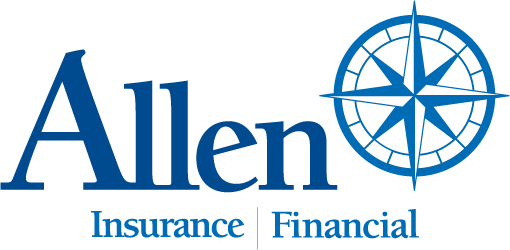The Tax Relief, Unemployment Insurance Reauthorization, and Job Creation Act of 2010 was signed into law on December 17, 2010. Without this compromise legislation, income and estate tax rates for most Americans would have increased. But this reprieve is only temporary, as most of the new tax provisions expire at the end of 2012. Here’s a quick guide to the key provisions.
Individual income tax rates: Rates will remain at the 2010 levels for 2011 and 2012 for all taxpayers, including couples with income over $250,000 and single taxpayers with income over $200,000. The lowest marginal tax bracket will remain at 10 percent and the highest will stay at 35 percent.
Capital gains and qualified dividends: Long-term capital gains and qualified dividend rates will remain at a maximum tax rate of 15 percent for 2011 and 2012. Taxpayers in the 10-percent and 15-percent brackets qualify for a 0-percent tax rate on all or some of their capital gain income. This provision is good news to taxpayers who rely on dividend income; without Congressional action, dividends would have been subject to tax rates as high as 39.60 percent in 2011.
Itemized deductions and personal exemptions: Taxpayers will use their itemized deductions and personal exemptions regardless of their income. Repeal of the itemized deduction and personal exemption phaseouts will continue through 2012. (For some taxpayers, several itemized deductions are not recognized under the Alternative Minimum Tax calculation.)
Marriage penalty: The standard deduction for married couples who file jointly will continue to be double the deduction for single filers through 2012.
Alternative Minimum Tax: The 2010 and 2011 AMT exemptions were increased, resulting in a reduction of the impact of the AMT on middle class taxpayers. More significantly, certain nonrefundable personal credits can be used to offset AMT liability for 2010 and 2011. These include the Child Tax Credit, Child and Dependent Care Credit, Nonbusiness Energy Property Credit, and others.
Charitable IRA: For tax years 2010 and 2011, taxpayers over age 70½ are permitted to make a tax-free transfer of up to $100,000 from their IRAs to qualified charities. Transfers intended to qualify for the 2010 tax year can be made as late as January 31, 2011. Making a transfer from your IRA can satisfy some or all of your required minimum distribution.
Payroll tax reduction: In 2011, payroll taxes will be reduced 2 percent. Because the tax act was passed so close to the start of 2011, expect some delay before the reduction is reflected in your paycheck.
Energy-efficient improvement credit: Expenses paid for energy-efficient furnaces, water heaters, insulation, windows, doors, and other qualified property may qualify for a credit through 2011, although the maximum lifetime credit is reduced to $500 for 2011. If a credit was taken in a prior year, no further credit is available.
Other deductions: The expanded student loan interest and Coverdell education savings deductions were extended through 2012. State and local sales tax, higher education tuition, and teacher’s classroom expense deductions were extended only through 2011. Please note: Although it is not a deduction, you can still exclude from income up to $5,250 of employer-provided educational assistance for higher education.
Other credits: Tax credits directly reduce your tax liability and are potentially more valuable than deductions. The refundable Child Tax Credit, the expanded Child and Dependent Care Credit, and the American Opportunity Tax Credit (formerly the Hope Credit) have been extended through 2012.
Business tax extenders: Several business-related tax provisions scheduled to expire in 2010 were extended. If you are a business owner, contact your tax advisor as to provisions that may affect you.
Estate and gift taxes: Based on the expiration of previous legislation, there was no estate tax for taxpayers who died in 2010. There was also no automatic “step-up in basis” that brought an heir’s basis in his or her inheritance up to fair market value. So, in 2010, some beneficiaries realized a higher income tax impact when they sold the inherited assets than they would have paid in estate taxes. Congress attempted to fix this inequity by giving executors the choice of tax treatments. Executors for decedents who died in 2010 have the choice of:
1. A $5 million exemption and a 35-percent top estate tax rate or
2. No estate tax, but a cap on an income tax basis increase for estate assets.
The lifetime gift tax exclusion for gifts transferred in 2010 remains $1 million. For deaths after December 31, 2010, the estate tax returns. The new act reunifies the gift and estate tax exemption and increases it to $5 million per taxpayer, with a maximum tax rate of 35 percent. This means that you can potentially give away $5 million during your lifetime without tax impact. The generation-skipping tax exemption will also increase to $5 million. Remember that, for lifetime gifts, you can apply a $13,000 per donee annual exclusion to your gifts before you tap into your unified credit exclusion. Married couples can double the annual exclusion and gift $26,000 per donee.
A new provision added to the tax code is the portability provision, which permits a spouse to apply the unused portion of a deceased’s spouse’s $5 million exemption to increase the surviving spouse’s available exemption. In light of the new estate provisions, 2011 is a good time to have your estate planning documents reviewed by your attorney to ensure the language is flexible enough to adapt to your goals.
This material has been provided for general informational purposes only and does not constitute either tax or legal advice. Investors should consult a tax or legal professional regarding their individual situation.



